

Why Artificial Intelligence Is the Future of iPhone’s iOS
source link: https://medium.muz.li/aifutureofios-24ab2d0a2dba?source=linkShare-ba35e4a09171-1511052856&gi=5cd476a3dc39
Go to the source link to view the article. You can view the picture content, updated content and better typesetting reading experience. If the link is broken, please click the button below to view the snapshot at that time.

iOS Smart Widgets: Why Artificial Intelligence Is the Future of iPhone’s iOS
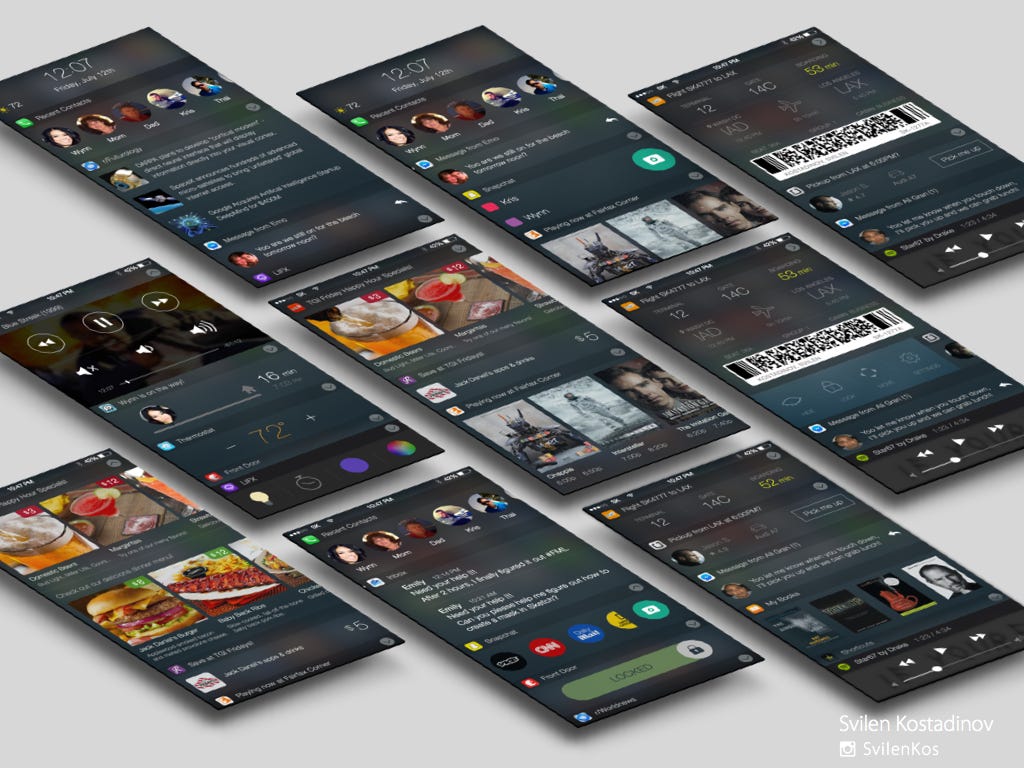
*Project originally published on Behance- March, 2015
Ever since its debut a decade ago, the iPhone has drastically evolved: it’s exponentially faster, the display and camera have improved in every conceivable metric (the original iPhone couldn’t even record video,) the form factor has been refined, and an array of new sensors have been added. While Apple’s industrial design continues to break new ground in manufacturing, its software on the other hand has plateaued over the years.
Smartphone, Dumb OS
Sure, there have been significant improvements in both functionality and aesthetics, but with the exception of the App Store (which Steve Jobs vehemently opposed) the difference in experience between iOS 1 and iOS 11 isn’t drastic:
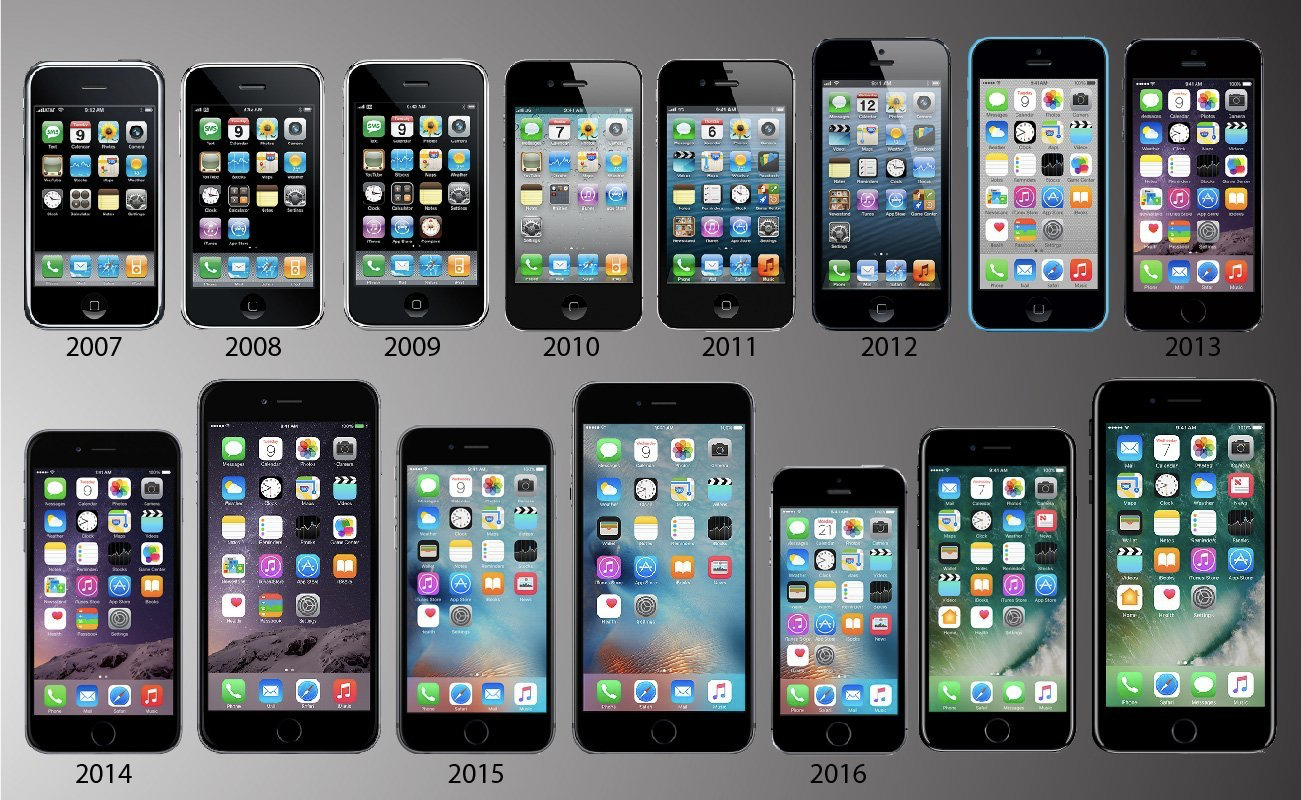
It doesn’t matter if you’re using your iPhone at home or in a foreign country, at day or night time, which friends you message daily, what games you play on your lunch break or what smart-devices you have in your home- as soon as you unlock your phone, you’re dropped in the same static, multi-screen grid of app icons.
If that’s not bad enough, the burden of organizing and grouping apps is left to users, leaving them reliant on muscle memory to navigate their way around.
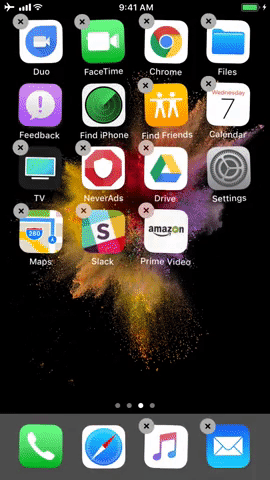
The idea that digital experiences should dynamically adjust to your needs isn’t new:
- Netflix suggests which movies you’d likely be interested in, shows that you should resume, new releases, genre categorization, etc
- Amazon suggests items you’ve recently searched, pairs items that are often bought together, items on sale, etc
- Spotify curates personalized playlists based on your taste
To Apple’s credit, they’ve started orienting themselves in that direction with Siri Suggestions for contacts and apps, and geolocation based suggestions for apps on the lock screen (not sure if it still exists in iOS11):
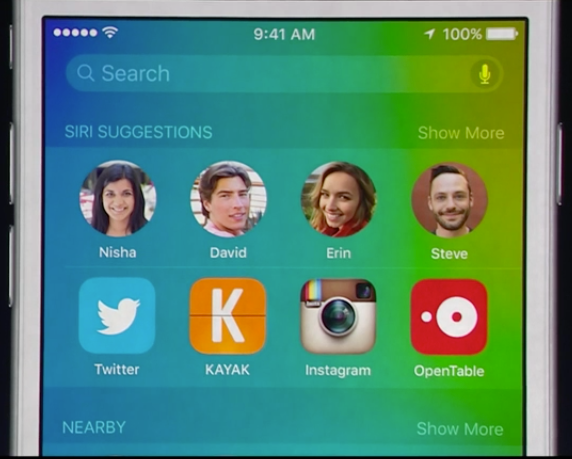
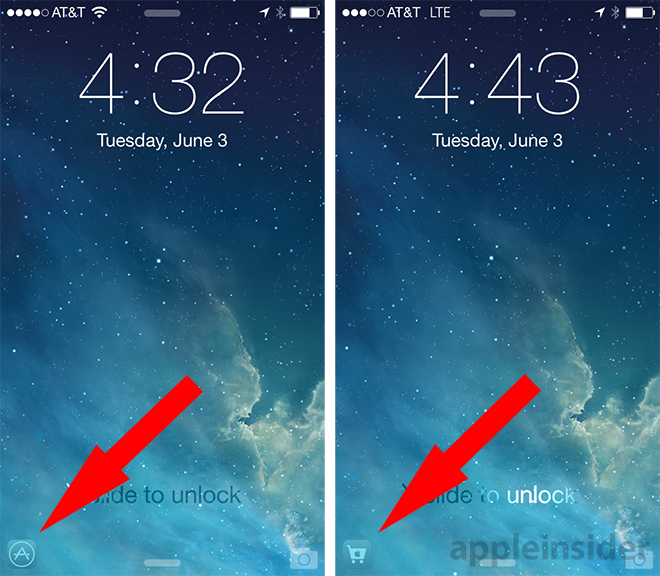
But even recommending the right app at the right place and time seems lacking. Pareto’s principle would suggest that 80% of the time, we only use 20% of an app’s features.
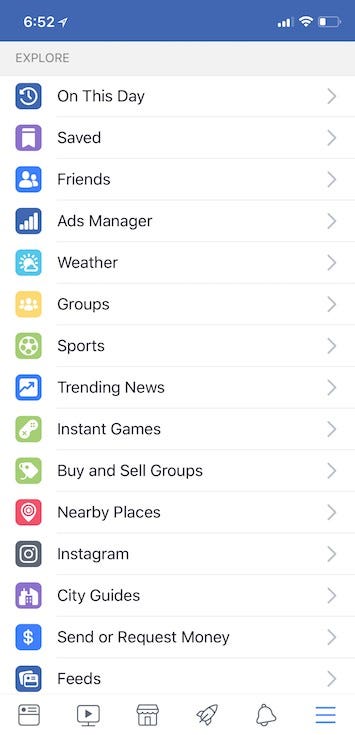
Facebook is a great example: it houses everything from newsfeed, stories, marketplace, groups, trending news, weather, games and city guides, etc. But I’m willing to bet that out of all those features, people use just the newsfeed over 80% of the time.
So instead of suggesting the Facebook app itself, why not offer just the newsfeed?
You’re probably thinking- how can individual features be modularized? Here too, Apple has a potential solution- widgets.
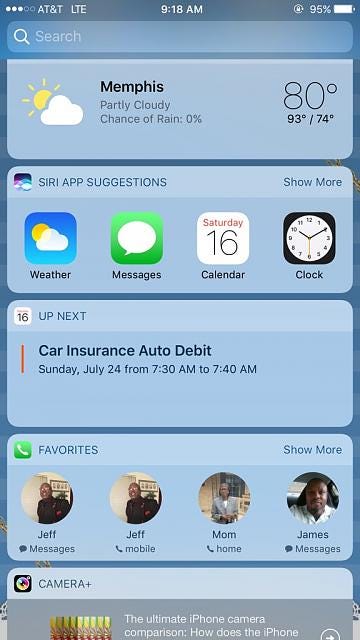
Unfortunately, the widget screen runs into the same problem as the home screen: it’s just a static inventory list.
The irony here is that new iPhones have a dedicated A.I. processor, yet the iOS experience doesn’t learn much about your usage patterns or preferences. But what if it did?
What if your phone learned when and where it was used and for what reason?
In early 2015, I explored the concept of a widget-centric iOS in a few common scenarios:
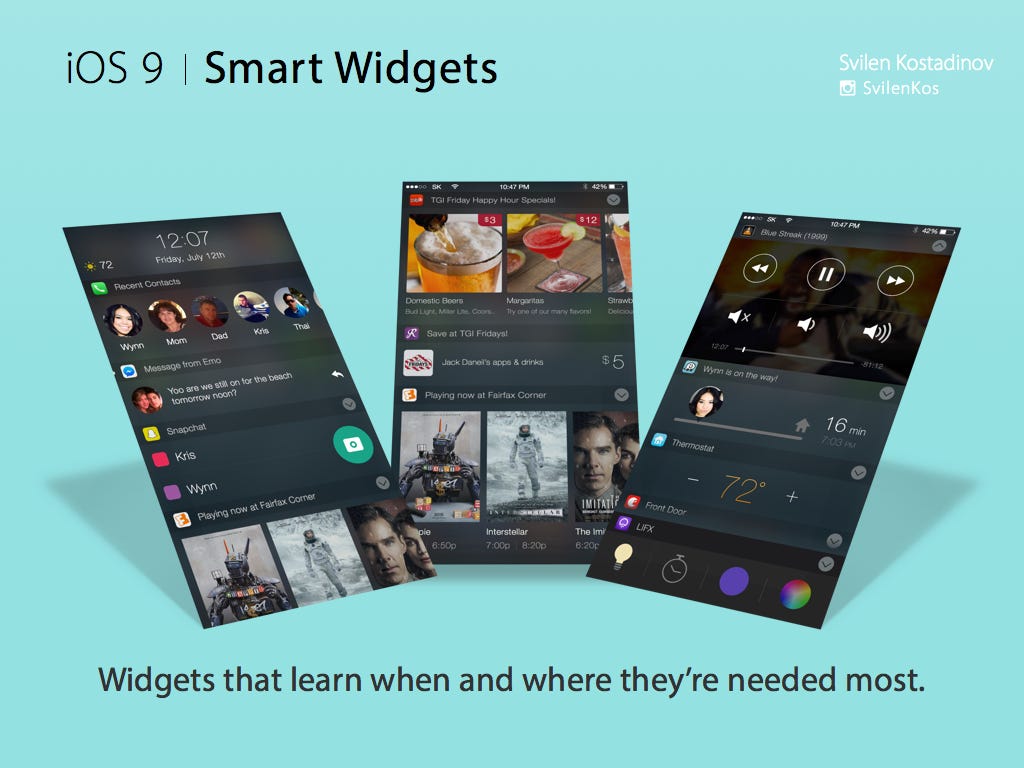
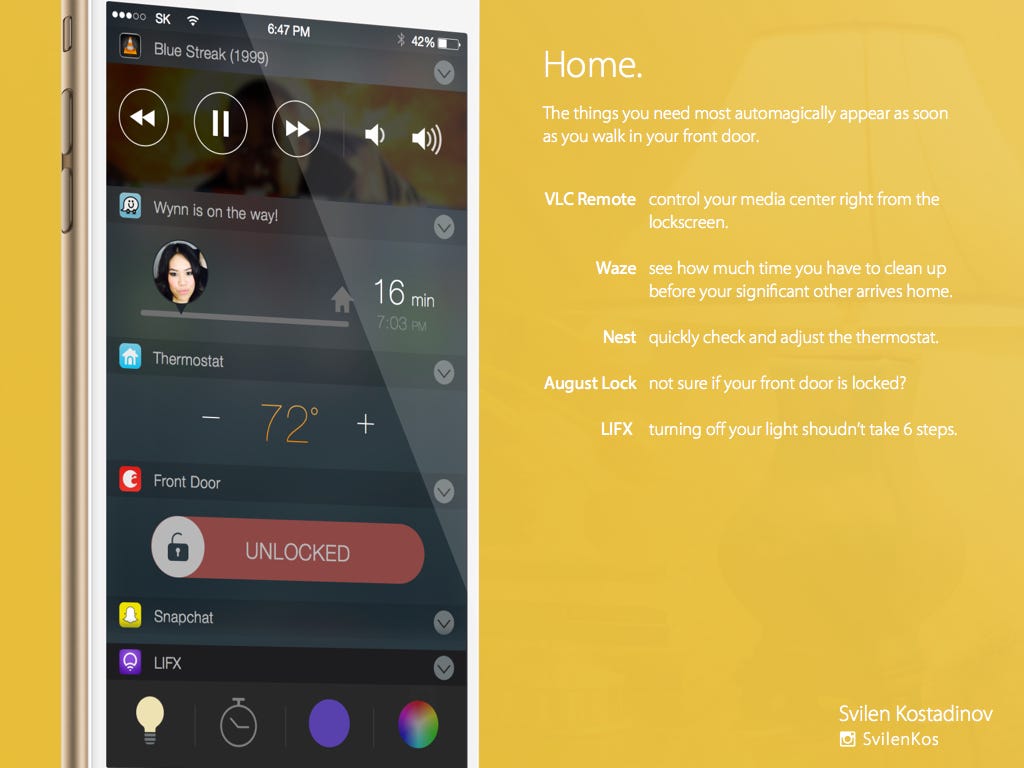
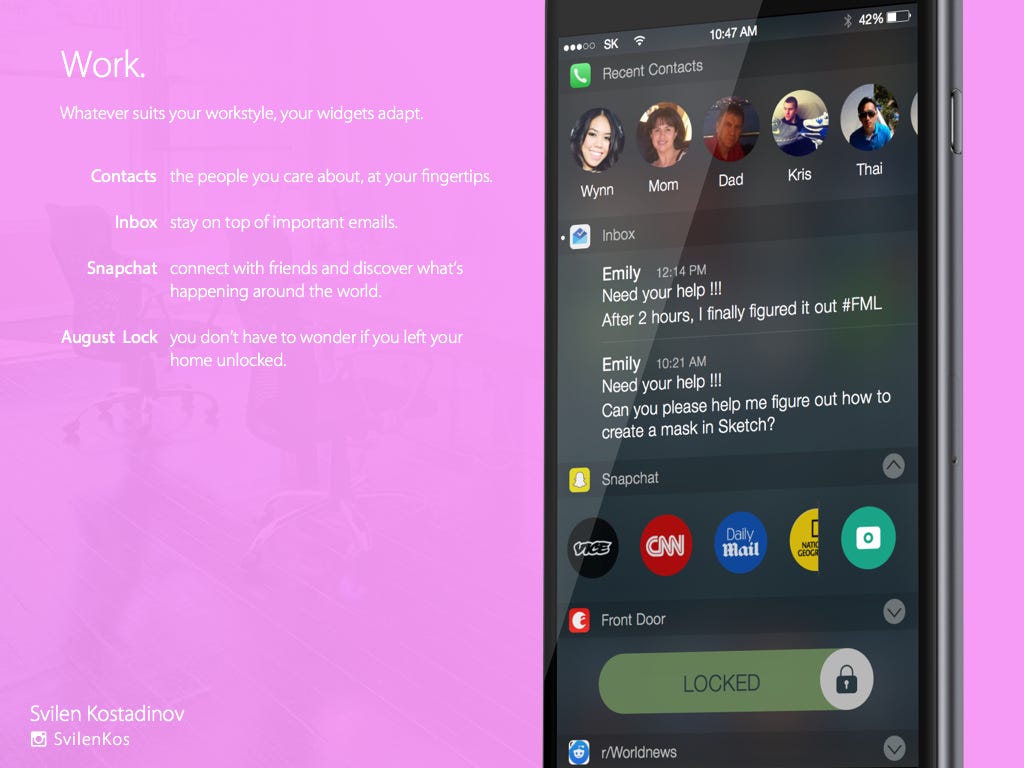
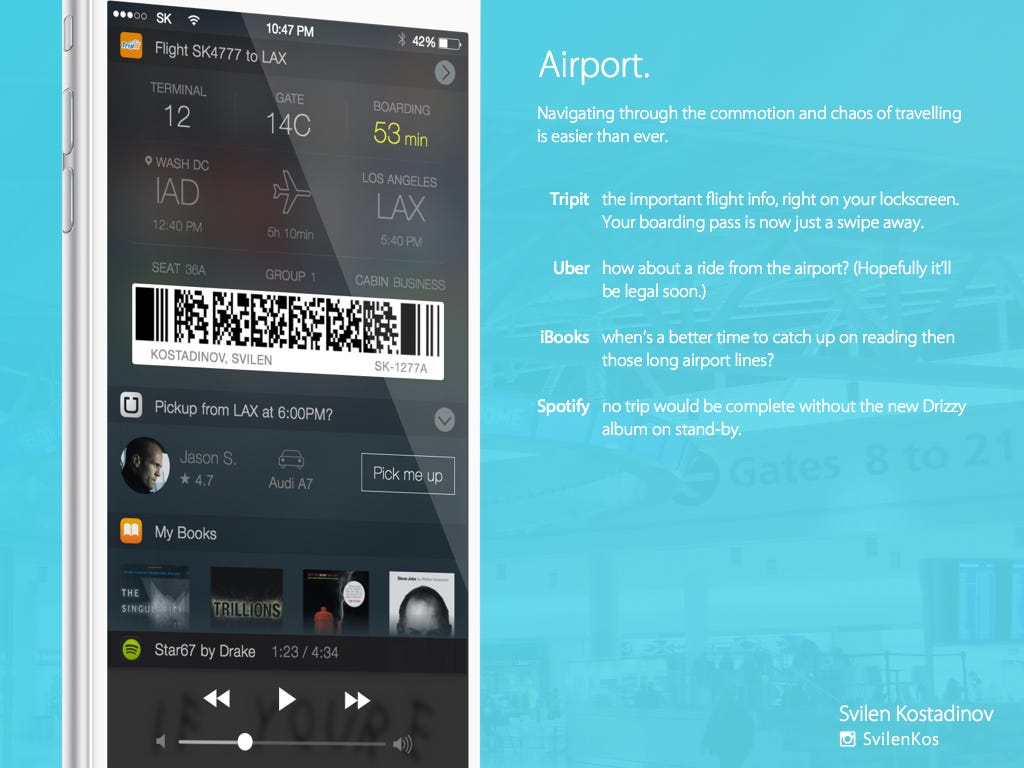
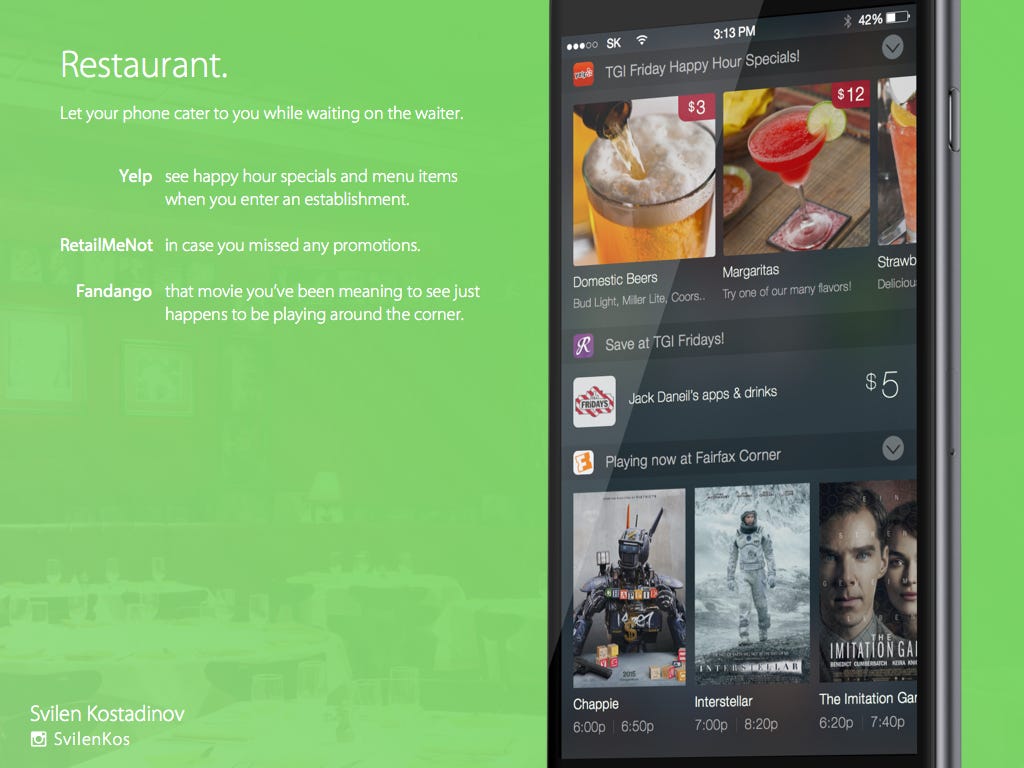
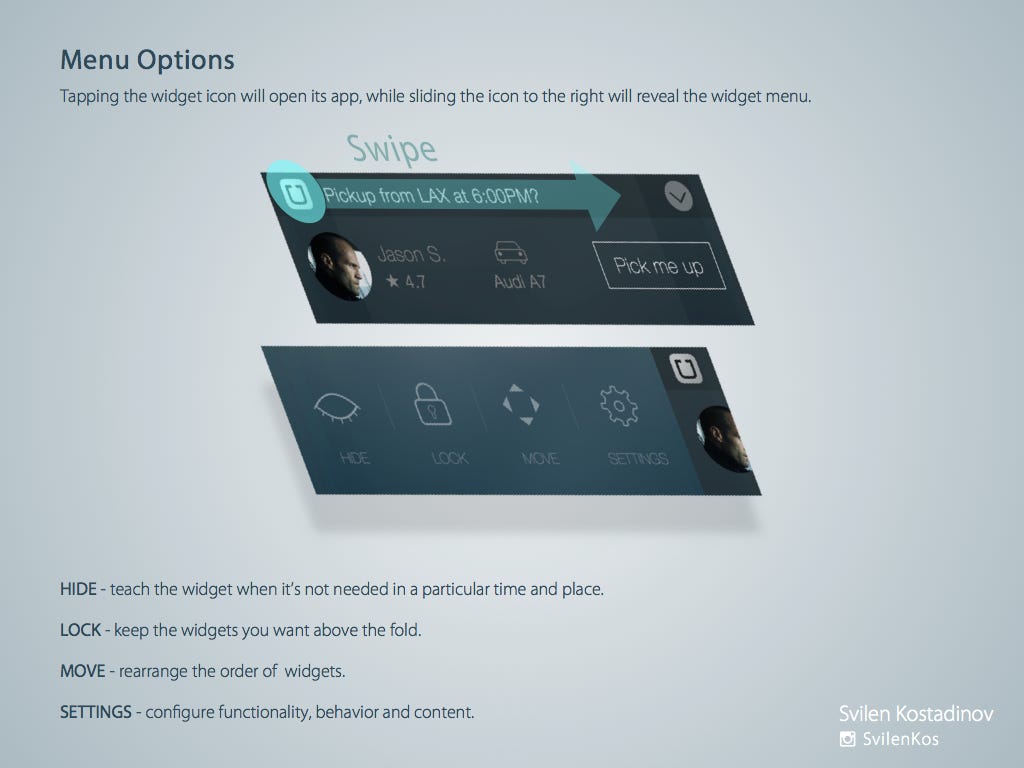

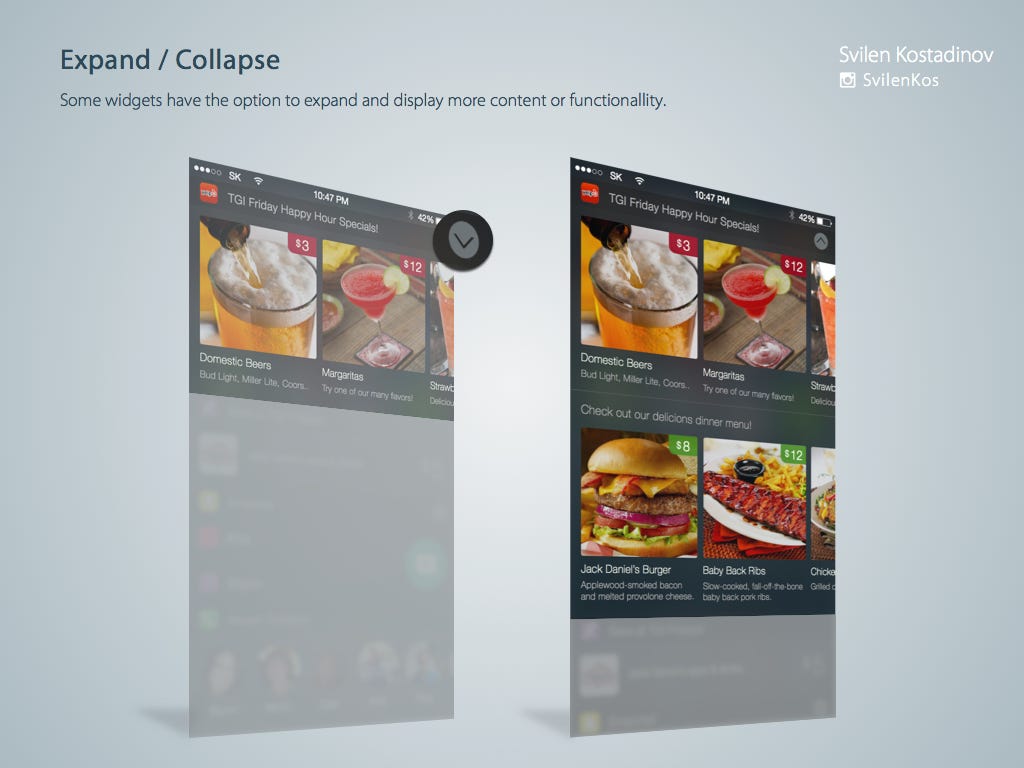
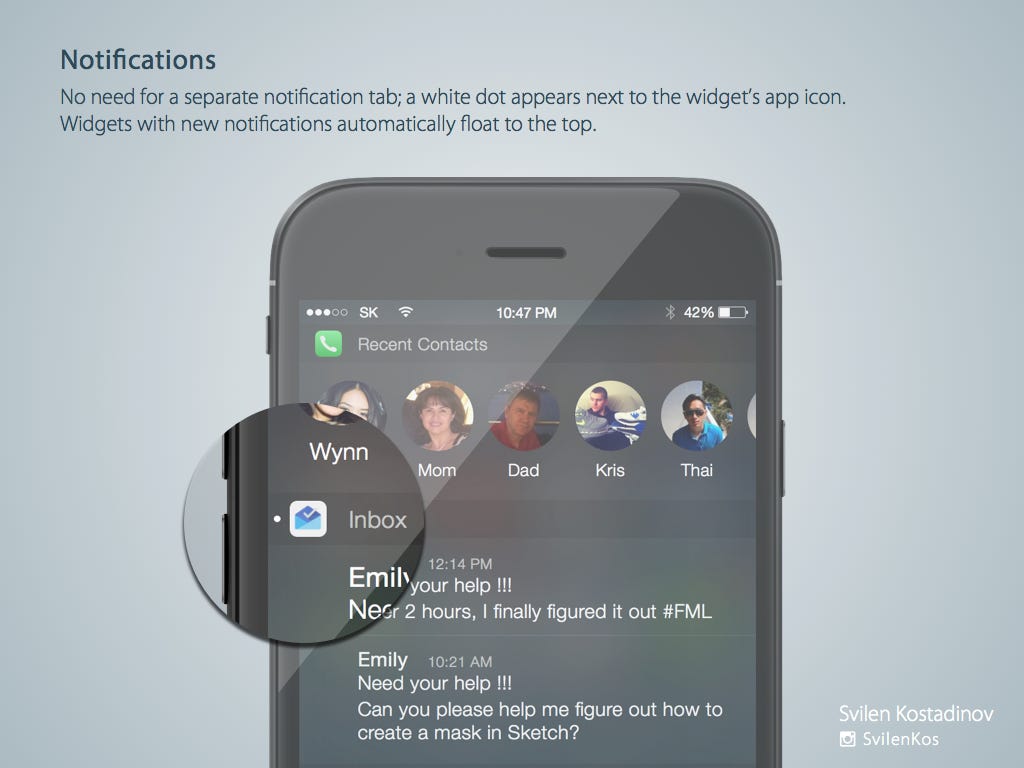
Machine learning has the potential to truly make iPhones smart by enabling them to learn the context and environmental circumstances of our usage. Taking it a step further, correlating things like location, friends in proximity, ambient light and noise levels and vital signs via Apple Watch would enable a new realm of experiences and services.
The Next-Gen Mobile OS
Google seems to validate this paradigm of dynamic interaction- in 2017, glimpses of their experimental mobile OS named FUCHSIA emerged. Although little is known thus far, the main premise seems be centered around widget-like modules that intelligently arrange themselves around the user’s needs:
Irregardless if widgets are the right solution, one thing is clear: we need more fluid and seamless experiences with our phones and smartwatches as the dynamism of our world increases. It’s time we rethink the fundamental way we interact with our devices, as the static app paradigm has reached its usability limits in an ever-increasing Apple ecosystem.
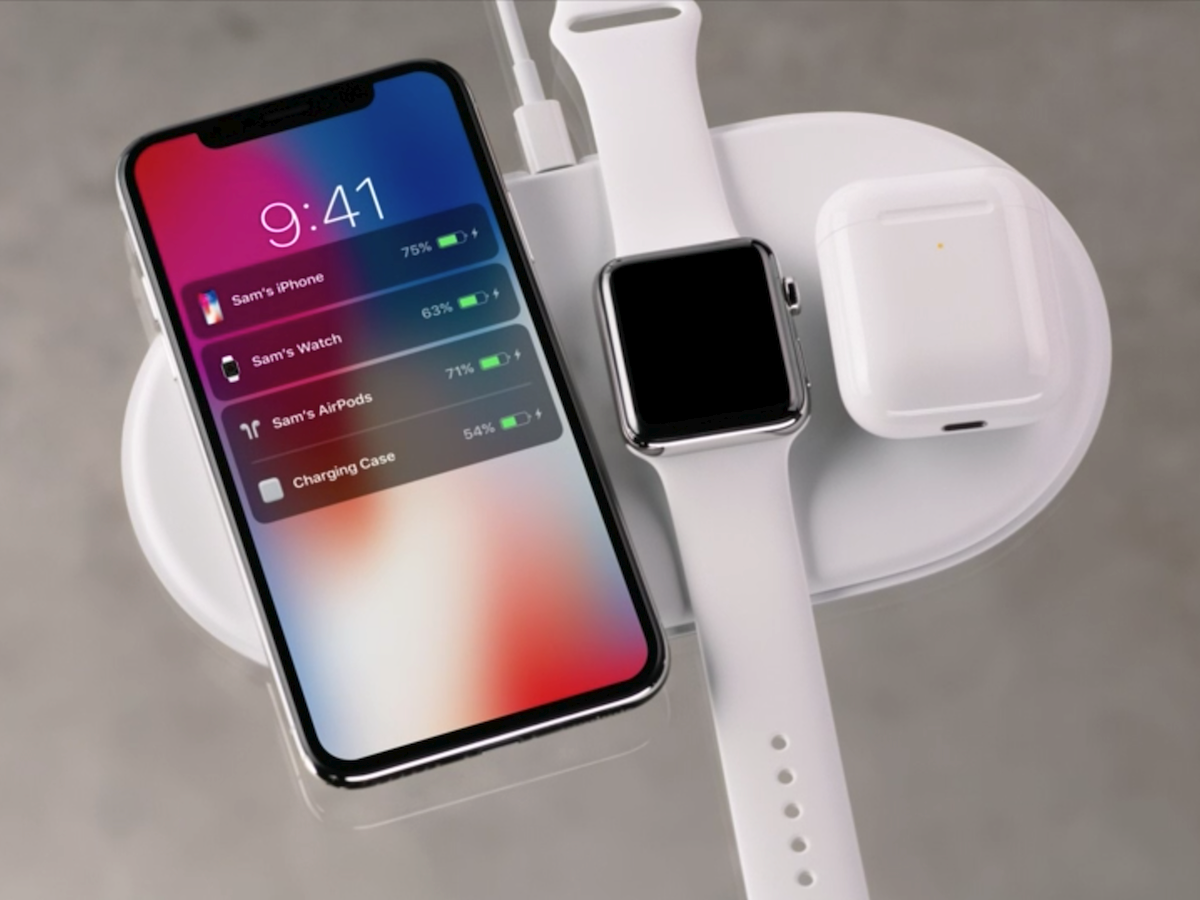
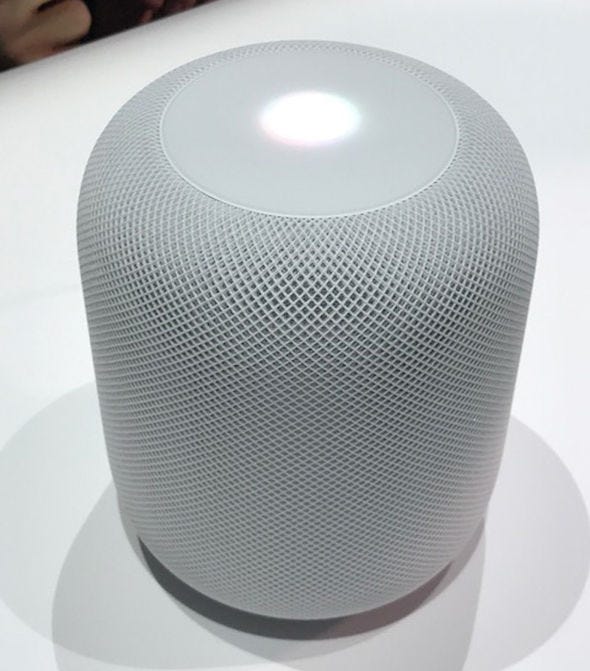
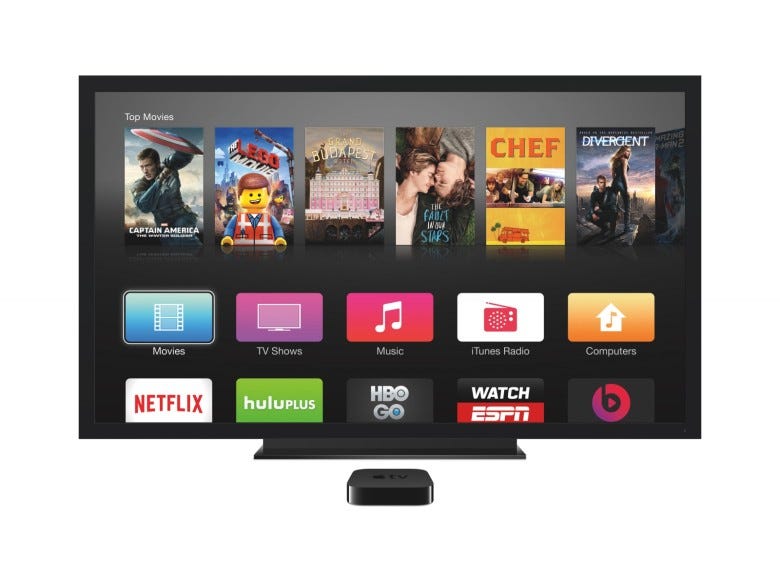
Recommend
-
 8
8
Advantages and Disadvantages of Artificial Intelligence and What Does the Future Hold?
-
 13
13
Artificial intelligence and the McData-fueled future of capitalismWe give away our data just so we can crush fake candy. What's a real hamburger worth?
-
 11
11
The Turbulent Past and Uncertain Future of Artificial IntelligenceAll eyes these days may be on Elon Musk's space venture—which has just put people in orbit—but...
-
 10
10
SmartData Collective > Big Data > Artificial Intelligence and the Future of Databases in the Big Data...
-
 11
11
Monday, 25 April 2022 09:32 Artificial intelligence and automation: The future of customer experience in the telco industry By Ravi Saraogi, co-founder and president, Uniphore APAC ...
-
 13
13
SmartData Collective >
-
 7
7
Community The future of creativity, brought to you by artificial intelligence
-
 10
10
Future Trend: The Use of Artificial Intelligence Companions and Chatbots in the Metaverse (and I Decide to Test Out the Replika AI Chatbot)
-
 12
12
AI is finally good at stuff, and that’s a problem Here’s why you’ve been hearing so much about ChatGPT. By
-
 5
5
What Does the Future Hold for the World Regarding Artificial Intelligence? December 20, 2022
About Joyk
Aggregate valuable and interesting links.
Joyk means Joy of geeK